Are you a drug addict without knowing it?
Highly processed foods, like chips, ice cream, and soda, can be just as addictive as illegal drugs. They have been manufactured to have a psychoactive effect on your brain and keep you coming back for more. Alcohol is much more dangerous than you think too. Once your body is hooked, withdrawals can be so extreme that they kill you. In this video, we dig into drugs that are available and dangerous.
Here are the 25 most addictive legal drugs!

Kratom

Katrom has exploded in popularity in recent years. Mainly found in tropical parts of Asia, it’s a plant that has a range of physical effects when the leaf is crushed and ingested. After taking it, it stimulates the body to increase alertness, attention, and energy. Some see it as a natural alternative to help with mental health and pain, and even as a way of managing cravings for other drugs, like opioids.
But Kratom can be just as addictive as illegal drugs. As time goes on, users need to take higher doses to achieve the same effects. Internally, it can damage the body, causing liver problems, breathing issues, and even death.
Synthetic cannabinoids
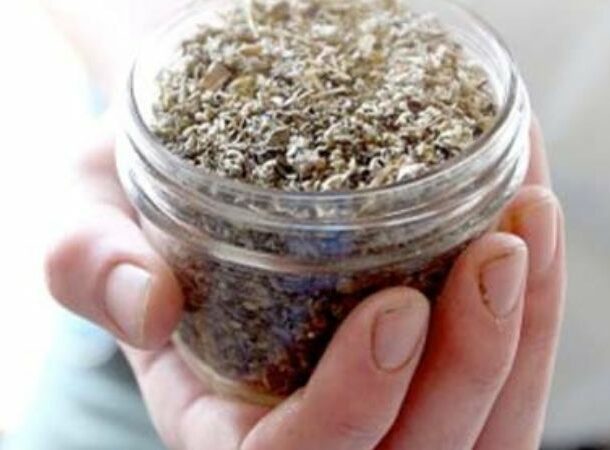
With legislation around marijuana relaxing, new products have flooded the market. Those include synthetic cannabinoids, designed to have a similar effect to the psychoactive ingredient in marijuana, THC. These are made up of solids, oils, herbs, and spices, and are consumed in the same way, usually by smoking. Just like marijuana though, it can be both a physically and psychologically addictive drug.
The difference is that because the products are constantly changing, they can have effects that aren’t as predictable as regular marijuana. In fact, the exact compounds in them are often unclear, meaning they could be toxic. Research has found that synthetic cannabinoids can cause serious health problems and even death.
Caffeine

Caffeine is one of the most widely available stimulants in the world. Most commonly, caffeine is found in coffee, soft drinks, and chocolate. Around 80% of Americans consume some amount of caffeine every single day.
There are plenty of benefits from caffeine, including increased concentration, reduced pain from headaches, and in long-term studies, there could be lower risks of conditions like Parkinson’s and Alzheimer’s.
It may not have the same kind of health effects as other drugs on this list, but caffeine can still be addictive, especially for people with depression or fatigue. It can interrupt sleep, cause gastrointestinal problems, increase blood pressure, and worsen mental health. Caffeine has been linked to heightened anxiety, panic attacks, and even inducing psychotic or manic symptoms.
Stopping caffeine cold turkey has a range of effects, from headaches to mood changes.
Highly processed foods

It may sound like a stretch, but some research has found that highly processed foods can be as addictive as drugs. They fit many of the prerequisites for an addictive substance — they can cause psychoactive effects on the brain, trigger compulsive use and cravings, plus reinforce behavior.
Highly processed foods are foods that are hyper-palatable and have refined carbohydrates or added fats, which make them so addictive. Examples are chocolate, ice cream, pizza, and soda. As these products have become more available, rates of obesity and diet-related diseases have increased.
Changing to a healthier diet can even trigger symptoms of withdrawal, including tiredness, cravings, and irritability.
Nitrous Oxide

Better known as laughing gas, nitrous oxide has been used as a pain reliever in hospitals going back more than 200 years. The brief euphoria and lowered anxiety have been particularly useful for dental work.
Over the past few decades though, nitrous oxide has made its way into recreational use. The drug is widely available because it is used to power whipped cream cans. Because it isn’t mixed with oxygen like in hospitals, the immediate danger is not getting enough oxygen to the body and risking brain damage.
The low cost of the canisters has made nitrous oxide addiction a growing problem and anything but a laughing matter. If you think that drug sounds dangerous, just wait until we get to number 15 on the list!
Dextromethorphan

Cough syrup is used to treat sore and irritated throats, especially among children. That’s when it’s used responsibly. But the active ingredient, either codeine or more recently dextromethorphan, has another use. When taken in large enough doses, it causes a dizzying high and hallucinations.
The percentage of dextromethorphan, also known as DXM, that comes in each bottle is relatively small, but people chasing a high can take it in pill form, powder, or extract the drug from the syrup to make it more potent. The effects of taking DXM include dissociation, rapid eye movement, paranoia, a racing heartbeat, and it can last up to six hours.
Consuming cough syrup is popular among adolescents because it is easy to access, and available at pharmacies or grocery stores. It is also common to mix with alcohol, which leads to greater intoxication but can also be deadly. Large doses can put a person into a coma or even kill them if urgent medical attention isn’t provided.
Betel Nut

Areca nut, more commonly known as the betel nut, is a nut consumed by about 600 million people in different parts of the world, especially Asia. That makes them the fourth most popular psychoactive substance. It’s a stimulant, inducing euphoria and alertness, and is mainly consumed through chewing.
Unfortunately, it has a dark side too. It has been classified as an antidepressant by researchers and found to be toxic. It stains the teeth of long-time users and has been found to cause cancer in the lungs, the pancreas, the liver, and the mouth.
Many users have been addicted for years, using the drug to stay alert, and some believe that it is a better alternative to smoking cigarettes. Since it’s deeply tied to cultural practices in parts of Asia, the addiction has proven to be difficult to control.
Pseudoephedrine
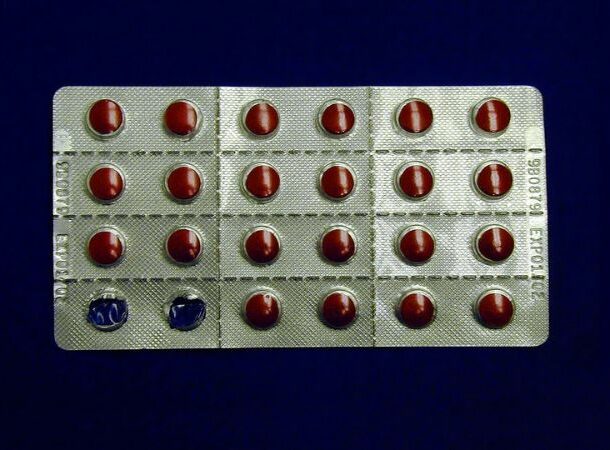
Those cold and flu drugs you can pick up off the shelf have a dark, secondary use that you may never have considered. Pseudoephedrine is an over-the-counter medicine used as a nasal decongestant to treat symptoms of the flu. But it also has well-documented addictive properties. It works by acting as a stimulant to the central nervous system in a similar way that amphetamines do.
The potential for its misuse has led to regulations and restrictions in different parts of the world. One case involved an addict taking as much as 4500 milligrams of pseudoephedrine each day. For context, the maximum recommended dose is 240 milligrams.
Dimenhydrinate
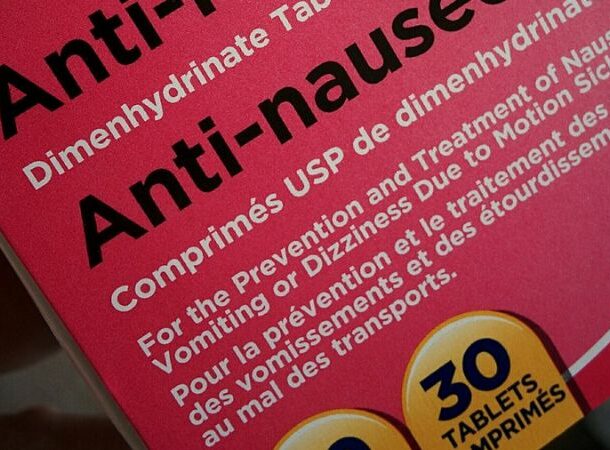
Dimenhydrinate, usually sold under the name Dramamine, is an antihistamine medication used for motion sickness. Throughout the 1990s and early 2000s though, it became popular among young people. They found that it could induce feelings of sedation and euphoria if taken in high enough doses, usually more than 800 milligrams.
Cases of addiction are rare, but it can be an attractive drug because of its sedative effects, especially among people with self-medicating anxiety problems or disorders related to trauma. Since it is available over the counter and in easy-to-take tablet form, dimenhydrinate is an appealing drug for some.
Just like most over-the-counter drugs though, these high doses are extremely dangerous, with the risk of losing consciousness, having convulsions, or even slipping into a coma.
Loperamide
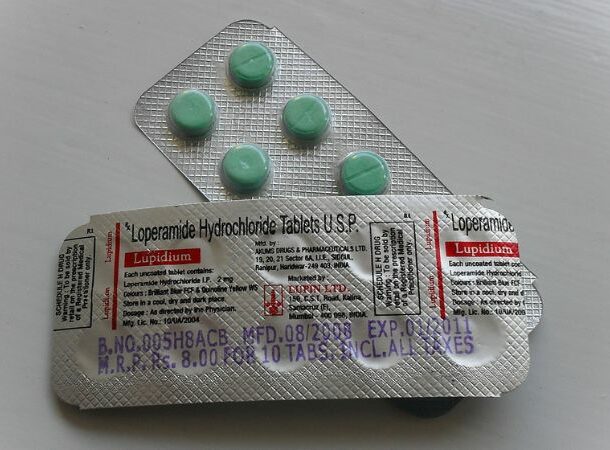
One of the newest drugs to make the list, loperamide is a medication used to treat diarrhea that is available over the counter. Usually, it remains in the digestion tract to slow contractions and relieve the symptoms of diarrhea.
However, in large doses, it has the same effect as an opioid and is able to pass the blood-brain barrier. The drug is becoming more popular with opioid users because of how easy it is to buy.
Although it is accessible, the amount of pills needed to achieve a satisfying high is huge, making it a very dangerous addiction. The number of deaths from loperamide overdose is growing every year.
Amyl Nitrite
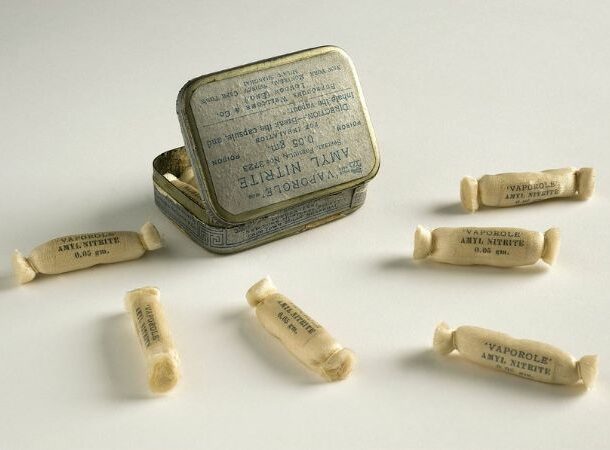
Amyl nitrite, better known as ‘poppers’, is freely available for the public to buy. It is used to relax muscles and was once a prescription for health conditions like angina, where a patient experiences tightness of the chest. Amyl nitrite opens up the blood vessels and lowers blood pressure. Today, it is mainly sold in smoke and sex shops for recreational use, marketed as an air freshener or cleaning product. Users inhale the vapor from the bottle to experience a short, euphoric high.
Long-term use has the potential to interrupt heart function, the respiratory system, cognitive abilities, and vision loss. Those are scary side effects. But it’s nothing compared to what some products found around the house can do — that’s coming up at number 10 on the list.
Marijuana
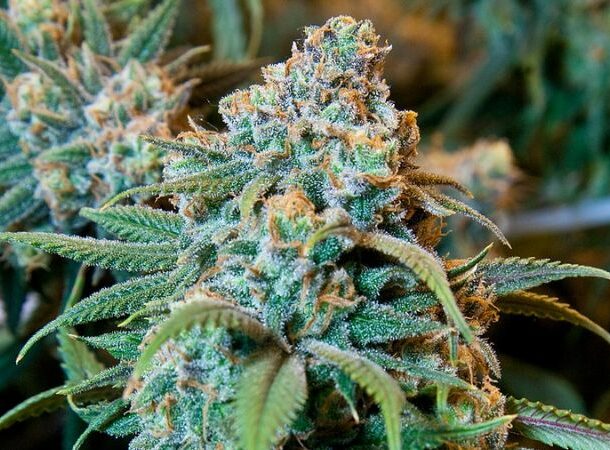
It might not be legal everywhere, but marijuana is fast becoming a normalized treatment. In the United States, 23 states have already legalized it.
The immediate and most appealing effects include euphoria and relaxation. But that isn’t the case for everyone. And certainly not in the long term. Apart from affecting decreasing motor skills and lowering inhibitions, marijuana can be addictive.
About 30% of people who use cannabis are addicted. Studies have linked it to social anxiety disorder and the development of serious psychiatric conditions like schizophrenia. Stopping can be difficult, leading to aggression, depression, and a loss of appetite for up to 3 weeks after quitting.
Morphine
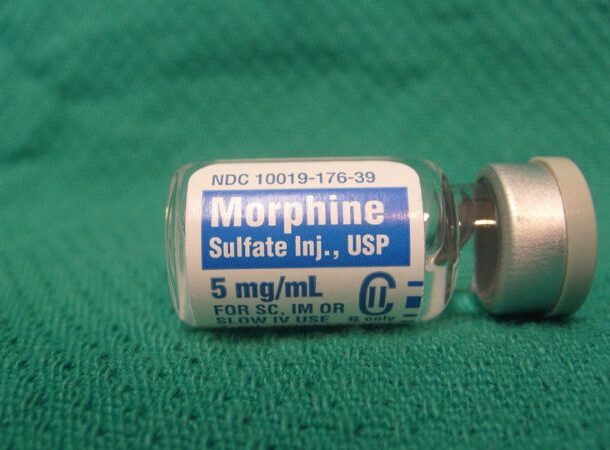
Morphine is so strong that even taking only the recommended amount can lead to becoming dependent on it. Over time, tolerance builds up, increases dependence, and changes the way the brain functions.
It’s an opioid usually prescribed for pain management after surgery, during labor, and in end-of-life care. It’s taken in either pill form or through injection and produces pleasurable feelings of relaxation and euphoria.
One of the risks is overdosing, which can cause respiratory depression where the body isn’t able to breathe properly. Addicts ignore these risks because of how dependent they become on morphine.
Valium
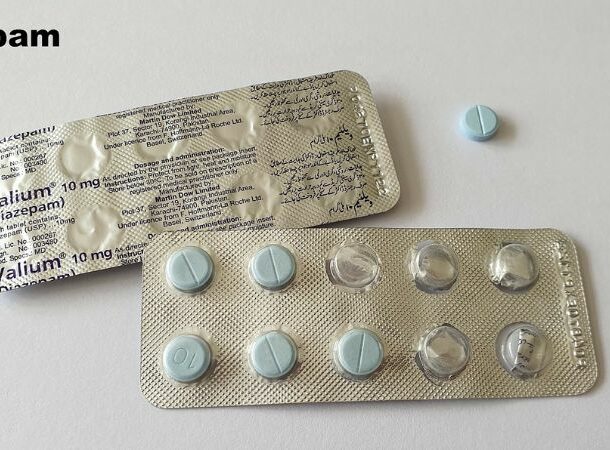
Anxiety disorders are rapidly on the rise. And there is no shortage of medication to meet the demand. Valium is one of the most popular. It relieves feelings of anxiety by increasing the amount of gamma-aminobutyric acid in the brain, which is the ‘calming chemical.’
However, misuse of valium is growing. It has been described as a ‘worldwide public health concern.’ Valium is part of the benzodiazepine family, which between 1996 and 2013, has seen a rise in deaths by over 400%. That doesn’t even include hospital admissions and unreported addictions.
Sugar
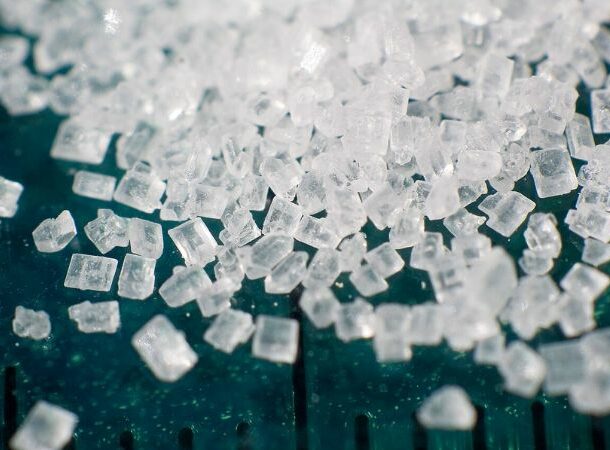
One of the most pervasive drugs on the list is sugar. On average, Americans consume around 70 grams of sugar each day. That number might seem low since even a ‘healthy’ muesli bar can contain over 10 grams of sugar alone. What’s even more shocking is that this is actually three times the recommended amount.
Some scientists categorize sugar as an addictive substance, with similar characteristics to cocaine. It alters mood by activating reward pathways, releasing opioids and dopamine. In experiments, rodents even experience withdrawals from sugar.
Weight gain, heart disease, diabetes, and a range of other illnesses are linked to the consumption of sugar. Just like other drugs, sugar withdrawal can be serious. It can mean headaches, irritability, and intense cravings.
Inhalants

Many household products can be misused by inhaling them, in vapor form. Things like cleaning products, paint thinners, gasoline, and glues can cause psychoactive effects when inhaled. An estimated 300,000 people in the United States are addicted to inhalants.
Similar to alcohol, they can induce slurred speech, lowered inhibitions, stimulation, and in some cases hallucinations.
These effects don’t last long, but they can create an unhealthy and potentially lethal relationship. This can make these substances addictive.Chemicals that give off a ‘high’ can stay in the body for years. Long-term consequences can be permanent, including organ, nerve, brain, and bone marrow damage. According to some research, withdrawals from inhalants can cause seizures too, which can be fatal.
Steroids
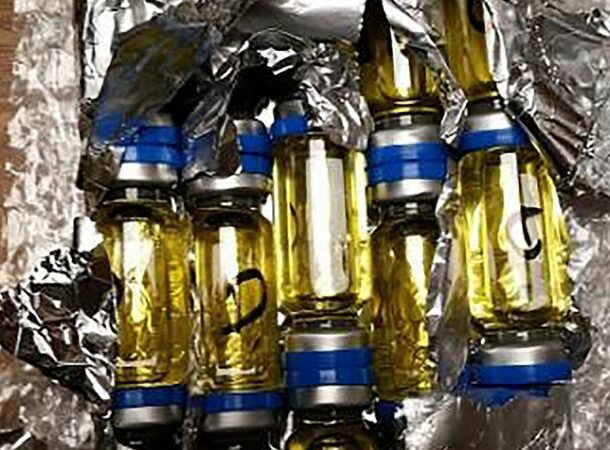
Anabolic-androgenic steroids are synthetic products that work in the same way that testosterone does. They can be prescribed by a doctor to help with recovery from injuries, illnesses, and infections.
But they are equally used illegally, by groups like athletes and bodybuilders, as a way to improve muscle mass, recovery, and performance enhancement. They are most commonly injected into a muscle or taken orally, usually as part of a ‘cycle.’ These drugs can be addictive because they often help to achieve the desired aesthetic effects.
However, under the surface, there are a range of health impacts, from liver problems, high blood pressure, and prostate cancer to infertility and erectile dysfunction. More visible side effects include loss of hair and severe acne.
Once a user begins to inject anabolic steroids, they are prone to becoming addicted, meaning they crave the drug. As with most addictive drugs, there are withdrawal symptoms too, such as depression, insomnia, anorexia, and fatigue.
Fentanyl
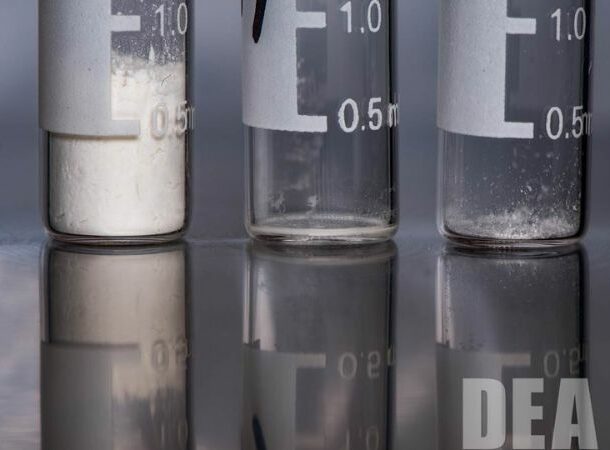
Everyone knows about the devastating effects of heroin. Derived from the poppy plant, heroin is a powerful opioid known to be the most addictive substance on Earth. Now, there is a new, even more deadly, substance.
It’s called fentanyl and it is a synthetic version. It is used in hospital settings for pain relief when traditional painkillers are not effective. It has now broken into the illegal drug market, especially since it is cheaper to make or acquire than heroin. Terrifyingly, it is between 50 to 100 times stronger than morphine. That strength also makes it more addictive and much more dangerous heroin.
A dose as small as 0.25 milligrams can be lethal. It is impossible to taste, see, or smell, which is why it has become common to ‘lace’ or ‘cut’ other drugs with fentanyl. Every day in the United States, more than 150 people die from overdosing on synthetic opioids, mainly fentanyl.
Seconal
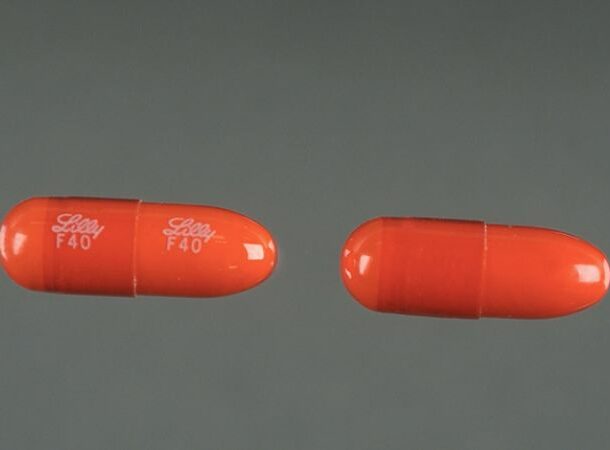
Secobarbital, better known as Seconal, is a drug normally used before surgery to help calm patients. But when used in the wrong setting, it can be addictive, especially for people with a substance use disorder. Between the 1960s and 1980s, Secobarbital was used as a recreational drug because it induces a state of sedation.
It has also been associated with a number of famous deaths, including actress Carole Landis and activist Fred Hampton. After a long period of use, withdrawals can be severe — anxiety, twitching, hallucinations, seizures, and in extreme cases, death.
Ambien
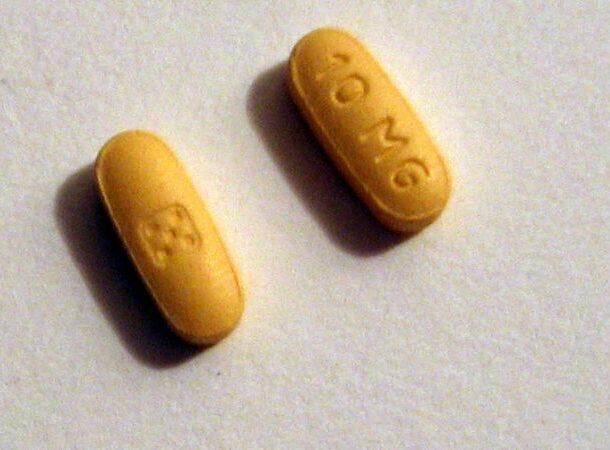
Between 10 and 30% of adults are affected by insomnia, struggling to have a healthy sleeping routine. We know that sleep is essential for your body and brain function for a range of reasons.
But when people turn to prescription medication to help sleep, it can be deadly. Drugs like Ambien are offered as a temporary solution to help instill a healthy sleeping pattern though the reality can be much darker.
Firstly, the body builds up a tolerance to these types of drugs, meaning that users need to take increasingly higher doses to have the same effect. The day after taking sleeping pills, side effects include feeling drowsy, dizzy, constipated, and less able to concentrate. They can also have a big impact on mental health, having been known to cause depression, agitation, and even hallucinations.
Stopping treatment immediately is also risky. It can cause withdrawals like nausea, anxiety, and a ‘vicious cycle’ that leads to taking the same drugs.
ADHD Medication

Medicine for attention deficit hyperactivity disorder, or ADHD, is used to help concentration, learning, and everyday functioning. There are two types: stimulants and non-stimulants. Non-stimulants work over a longer time frame to boost a certain chemical in the brain. However, stimulants are much stronger, which is why they are controlled substances. These include Ritalin and Adderall, both powerful, fast-acting drugs.
With more young people prescribed ADHD medication than ever before, there is a threat of falling into a spiral of addiction. Young adults with ADHD are between two to three times more likely to become addicted to alcohol or other drugs than others.
Benzodiazepines
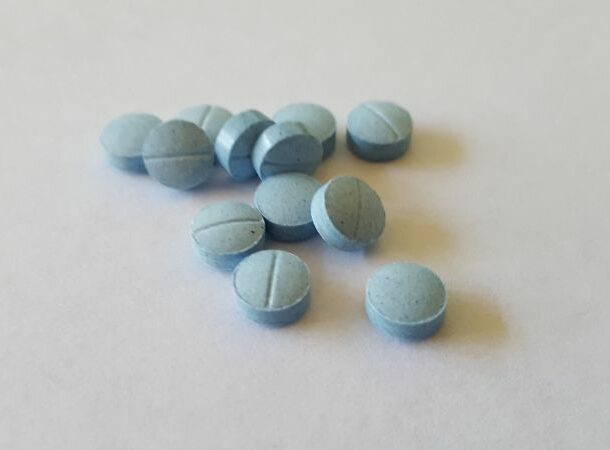
Benzodiazepines are a family of mood-regulating drugs that are prescribed to help with anxiety and stress. What’s so risky about them is just how quickly users can become dependent on them. Within just 7 days of use, users can build up a tolerance to drugs like valium and become addicted. That’s why medical professionals only recommend them for short-term use.
In 2020 alone, almost 2% of people in the United States reported abusing benzodiazepines. The drug can change the chemical makeup of the brain, making it difficult to stop. Withdrawal symptoms range from hand tremors and dry retching to seizures and heart palpitations.
Alcohol

Alcohol is everywhere. From media and entertainment to socializing and family life, it’s almost impossible to escape.
That’s why most alcoholics slip slowly into an addictive relationship with the drug. It’s one of the leading lifestyle-related causes of death, strongly associated with strokes, dementia, liver disease, and a range of other illnesses. In 2019 alone, alcohol was responsible for almost two and a half million deaths worldwide.
Because of how it works as a depressant of the central nervous system, it makes quitting complicated. The body becomes dependent on the drug and the side effects of withdrawal can range from tremors and anxiety to seizures and death.
Nicotine

By far the most addictive and accessible substance in the world is nicotine. Most often found in cigarettes, the drug shoots up to the brain within seconds, releasing dopamine similar to the way that opioids, cocaine, and alcohol do. In fact, it is just as addictive as these drugs.
Nicotine is a stimulant, meaning that it helps to speed up messages carried between the brain and body. Nicotine users, mainly smokers, are often physically and psychologically dependent on the drug. There are an estimated 1 billion smokers in the world, more than 10% of the global population. It’s not just cigarettes either. Now, ‘e-cigarettes’ and vape pens contain the drug too.
Smoking has been known to cause cancer for almost a century, but a combination of a powerful tobacco industry and the addictiveness of the product has made it difficult to slow down.
Opioids
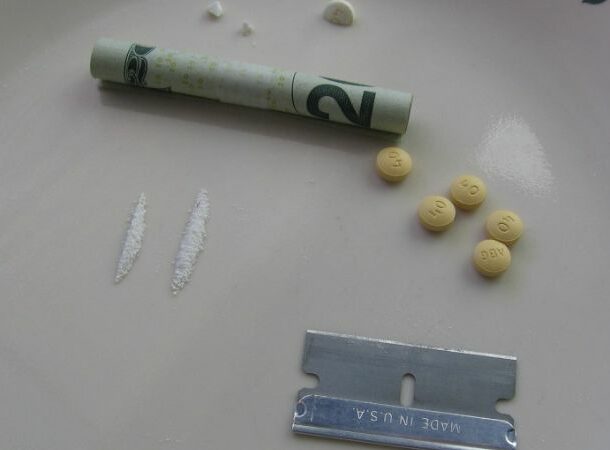
Opioids don’t only mean heroin. There are plenty of legally available opioids that are devastatingly addictive. Drugs like OxyContin, Percocet, and Vicodin are all prescribed to help manage severe pain. The problem is that these are all dangerously addictive.
When ingested, opioids bind to receptors located throughout the body and brain on nerve cells. The major effect might be pain suppression, but they also create euphoric feelings by triggering the release of endorphins. Since the feeling doesn’t last, it leaves the user wanting more and often abusing them.
Overdosing on opioids can lead to your breathing system shutting down, which can put you into a coma or kill you within minutes. Between 1999 and 2021, almost 280,000 people in the United States died from overdosing on prescription opioids. The number is currently an average of 45 people every single day.
Finding the balance between medical treatment and public health has never been more difficult.



























